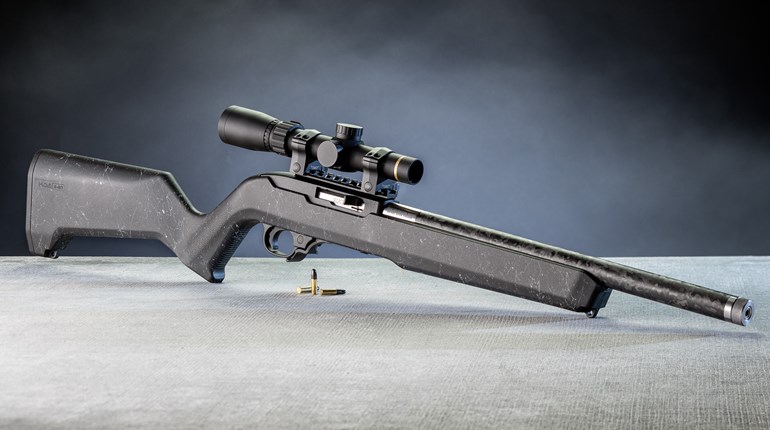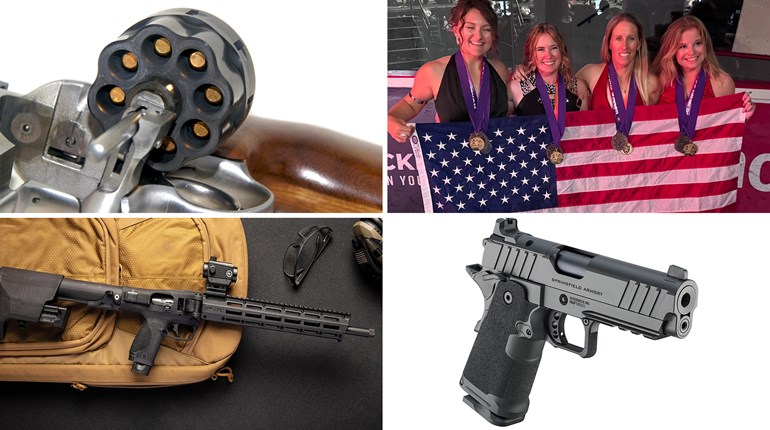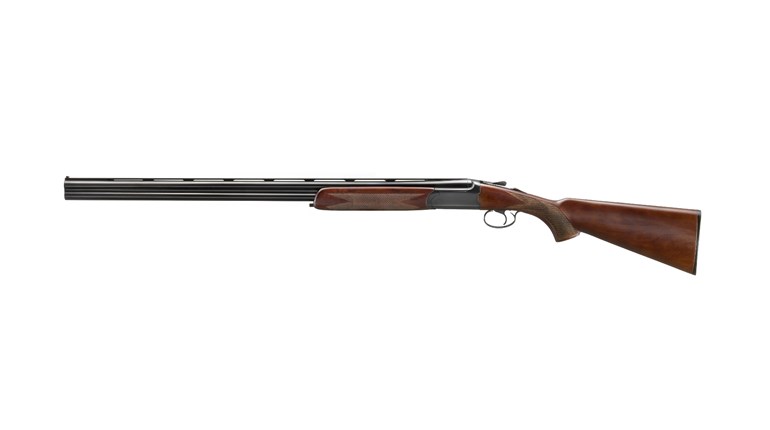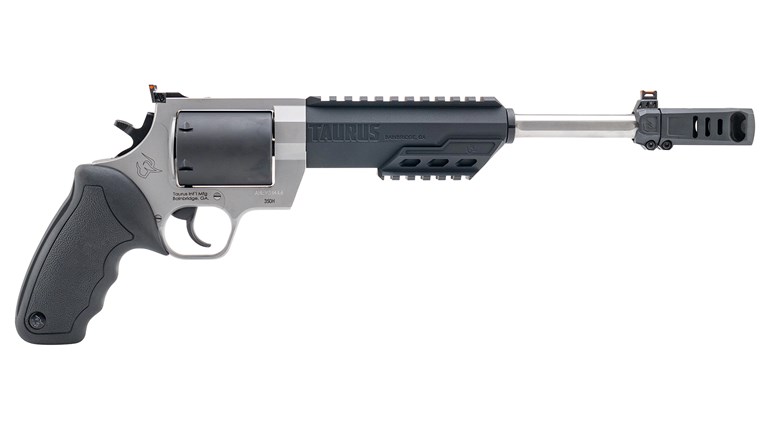
Elmer Keith and Skeeter Skelton are surely smiling down from Valhalla with the announcement that Ruger has produced a GP100 chambered in .44 Special. While Keith was a great proponent of big-bore handguns and developed the .44 Mag. cartridge after hot-loading .44 Special., it was Skeeter who had an affinity for the .44 Special. He spent a lifetime developing loads for the Special, converting revolvers to the cartridge and trying to talk manufacturers into making a medium-frame, double-action .44 Special. revolver. Skelton imagined such a revolver could be made with a five shot, unfluted cylinder, thus providing plenty of cylinder-wall thickness between the cartridges for strength—and this is exactly what we have in the new Ruger I’ve been reviewing.
The .44 Special is something of a magical cartridge with a devoted fan base that generally feel a bit deprived. While they have longed for .44 Special revolvers, the major manufacturers have been less than forthcoming, most often bringing out .44 Special revolvers as limited editions, if at all. And that’s reasonable, considering the .44 Special is not a big seller and is something of a cult favorite. The thing .44 Special devotees know is the cartridge is extremely accurate, easy to handload and is very versatile. Whether in factory ammunition or handloads, the .44 Special can serve in a target, defensive or hunting capacity with loads that go from mild to absolute full-blown stompers.

Back in 1986, when the .357 Mag. version of the Ruger GP100 came out, most American police officers carried revolvers and Ruger was competing with Smith & Wesson for its share of that market. The hot setup in my outfit, the Border Patrol, was either a Smith & Wesson L-frame 686 or the GP100. These revolvers were a little bigger than the medium-frame revolvers like the Smith & Wesson K-frame or the Ruger Security-Six and were designed to hold up better with a steady diet of hot .357 Mag. ammunition. So similar in size were these revolvers that they fit in the same holsters and used the same six-shot speedloaders. While I have a suspicion the GP100 might be a bit stronger than the 686, there’s no doubt these are tough revolvers, as Smith & Wesson produced a five-shot .44 Mag. version last year, the Model 69. To me, that indicates the five-shot GP100 in .44 Special will handle any reasonable .44 Special load, including some pretty hot handloads. Does that mean I’m recommending trying to turn it into a .44 Mag.? Not at all. Hot loads are dangerous and unnecessary. Flinging heavy bullets at moderate velocities is what the .44 Special does best, and that is exactly what’s needed for defensive use against man and most beasts.
Featuring a 3-inch barrel with a full under lug, this .44 is a modern rendition of the classic belly gun, a stubby, powerful, concealable big-bore revolver. The rear sight is a standard adjustable variety with a white outline, while the front sight is a dovetailed green fiber optic. I like that—it gets my attention quickly. The smooth, narrow trigger is ideal for double-action shooting. I have to back up a little and tell you a story about the grip on this revolver. A couple of years ago, Ruger’s revolver product manager, Kurt Hindle, wanted a new grip without finger grooves for the 3-inch-barreled LCRx variant of the popular Ruger LCR. He persuaded Hogue to make this grip, which to my mind is reminiscent of the Jordan Trooper wood grips that happen to be one of the great revolver grips of all time. An up-scaled version of this grip is provided on the Ruger GP100 in .44 Special, and it is the best big-bore revolver grip I have experienced.

The double-action trigger pull on my sample is smooth, doesn’t stack and measures a slightly heavy but usable 11 pounds. The single-action trigger breaks at just under 5 pounds. Weighing 36 ounces unloaded and almost 40 ounces with five big cartridges, the weight of the revolver combined with the comfort of the grip helped me fire almost 200 rounds of .44 Special defensive ammunition in one long session without discomfort. The revolver handles well and the fit, finish and appearance are what we have come to expect from Ruger products. The GP100 isn’t a pocket pistol, but it packs easily in a belt holster and can be concealed with a jacket or baggy shirt. A friend of mine carries one of these revolvers every day as one of the two pistols he carries concealed and has no trouble at all with the weight or size of the gun. I have two small complaints; the double action could be lighter and smoother and the pin in the top of the frame that secures the rear sight drifted out to the left several times during my extended firing session, but neither problem is a deal-breaker.
The .44 Special is just that—special. It’s powerful, accurate and pleasant to shoot in big revolvers like this GP100. The cartridge has always had a loyal following and I predict Ruger will easily sell every one of these they care to make. Looking into the crystal ball, I wouldn’t be surprised if Ruger next produced a 5-inch barrel. Wouldn’t that be just the thing?






































